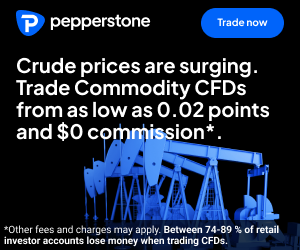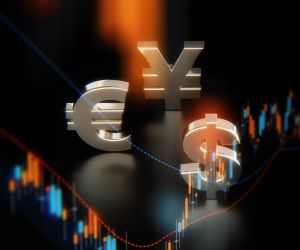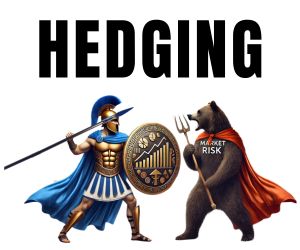GANN THEORY AND ITS APPLICATION IN FOREX TRADING
Gann Theory, developed by trader W.D. Gann in the early 20th century, combines geometry, time, and price to forecast market movements. Based on the belief that markets follow natural laws and cyclical patterns, Gann’s methods use angles, squares, and cycles to identify turning points. While complex and sometimes controversial, these tools remain popular among traders seeking structure in price action. In this article, we cover the basics of Gann Theory, explore its core tools like angles and cycles, and show how modern Forex traders adapt these techniques to currency markets.

Gann Basics
Gann Theory begins with the premise that financial markets are not random but follow identifiable patterns governed by natural laws. W.D. Gann, a trader active in the early 20th century, built his reputation on predicting turning points in stocks and commodities with remarkable accuracy. His approach was rooted in mathematics, geometry, and cycles, drawing from disciplines as diverse as astronomy, architecture, and ancient philosophy. For Forex traders, understanding these foundations is essential before diving into Gann’s specific tools such as angles, squares, and time cycles.
The Philosophy Behind Gann
At the core of Gann’s philosophy was the belief that human behaviour, and therefore market behaviour, is cyclical. He argued that markets are influenced by recurring natural and psychological rhythms, much like the changing of seasons or planetary movements. According to Gann, price and time are inextricably linked, and when they align in specific ways, major shifts in trend are likely to occur. This idea contrasts with purely fundamental analysis, which attributes price changes to news or economic data, and instead emphasises structure and predictability in market dynamics.
Price, Time, and Geometry
One of Gann’s core insights was that price and time should be analysed together, not separately. In his work, a price move of one unit could be compared to a time move of one day, week, or month, establishing proportionality between the two dimensions. This is where geometry entered the picture. Gann developed systems of angles and squares to map price against time on a chart, creating visual frameworks that traders could use to identify balance or imbalance in the market. For example, a 45-degree line on a chart symbolised equilibrium between price and time, serving as a guide for trend direction and potential reversals.
Key Gann Tools
Among Gann’s most well-known tools are the Gann angles, the Square of Nine, and the Gann Wheel. Gann angles are diagonal lines drawn from a significant price point at fixed slopes, such as 1x1 (45 degrees), 1x2, or 2x1, representing the relationship between price and time. The Square of Nine is a spiral of numbers that helps traders identify potential support and resistance levels based on geometric and numerical progressions. The Gann Wheel, sometimes called the Wheel of 24, organises numbers and angles into a circular framework that reflects cycles of time and price. These tools may appear esoteric, but their aim is to provide structure in otherwise chaotic markets.
Why Traders Still Use Gann
Despite being over a century old, Gann Theory continues to attract interest because of its emphasis on discipline and structure. Many traders find value in using Gann angles and cycles to frame their analysis, even if they do not fully embrace every aspect of his philosophy. The Forex market, with its global scope and 24-hour trading cycle, offers fertile ground for applying Gann’s principles, particularly when combined with modern technical analysis tools. Traders often use Gann techniques alongside moving averages, Fibonacci retracements, or Elliott Wave analysis to confirm signals and strengthen confidence in their setups.
Criticism and Caution
It is important to note that Gann’s methods are not universally accepted. Critics argue that they are overly complex, subjective, and difficult to test systematically. The geometric constructions can vary depending on the chart scale, and interpretations of cycles may differ between traders. For this reason, many professionals view Gann as a complementary tool rather than a standalone system. In Forex trading, where liquidity and volatility can distort price behaviour, applying Gann without additional confirmation can be risky. Nevertheless, for traders who take the time to study and adapt his methods, Gann offers unique insights into the rhythm of markets.
The Relevance for Forex Today
Modern Forex traders are often drawn to Gann Theory because it bridges the gap between technical precision and broader market psychology. While algorithms and data-driven models dominate trading desks, the human tendency to react in cycles of fear and greed persists. Gann’s work provides a lens through which to interpret these recurring behaviours, especially in long-term currency trends. Whether applied to major pairs like EUR/USD or commodity-linked currencies like AUD/USD, Gann’s focus on the balance between price and time remains a compelling framework for market analysis.
Angles & Cycles
If the foundations of Gann Theory are philosophical, its practical tools are geometric. Angles and cycles are at the heart of Gann’s methods, giving traders a way to measure balance between price and time while anticipating turning points. These techniques are not just lines on a chart but a framework for understanding rhythm in markets. In Forex, where movements often appear chaotic, applying Gann’s angles and cycles can bring order to price action and highlight where momentum may shift.
Gann Angles Explained
Gann angles are diagonal lines drawn from a significant high or low, projecting into the future at fixed slopes. The most famous is the 1x1 angle, which rises one unit of price for every one unit of time—a 45-degree line on a properly scaled chart. This line symbolises equilibrium between price and time. If prices rise above it, the market is considered strong; if they fall below, weakness is implied. Other angles such as 1x2, 2x1, 1x4, or 4x1 represent different speed relationships, helping traders gauge whether a move is accelerating or decelerating.
In practice, these angles form a grid that maps potential support and resistance. For example, if EUR/USD rallies from a major low and approaches a 2x1 angle, traders might expect resistance, just as they would from a moving average or trendline. The difference is that Gann angles integrate time into the calculation, not just price. This dual dimension makes them unique among technical tools.
Time Cycles and Repetition
Cycles are the other half of Gann’s system. He believed that markets move in recurring intervals of time, often linked to natural or astronomical rhythms. These include annual, monthly, and even planetary cycles. In Forex, traders often adapt this idea by looking for repeating intervals between significant highs and lows. For instance, if a currency pair tends to reverse roughly every 90 trading days, that rhythm can be monitored to anticipate the next turning point. Cyclical analysis doesn’t predict exact prices but highlights when the market is more likely to change direction.
Combining Angles and Cycles
The real power of Gann’s approach emerges when angles and cycles converge. If a major angle intersects price action at the same time that a cycle window opens, the probability of a reversal increases significantly. Traders may use this as a signal to reduce exposure, tighten stops, or prepare for a directional trade. For example, if GBP/USD has rallied into a Gann angle while also reaching the end of a 180-day cycle from its last major low, that confluence suggests heightened risk of a correction.
Case Studies in Forex
Practical application of Gann angles and cycles can be seen in major currency pairs. During the eurozone crisis, EUR/USD often reversed near projected Gann angles drawn from previous highs. Traders combining these projections with cyclical analysis were able to anticipate significant turning points. Similarly, USD/JPY’s long cycles of yen strength and weakness have aligned with key Gann time counts, providing traders with early warnings of regime changes. While not perfect, these tools offered a structured lens for interpreting what appeared to be random volatility.
Challenges in Application
Despite their appeal, Gann angles and cycles are not easy to master. Their accuracy depends on correct chart scaling, and identifying the right starting point for an angle or cycle is often subjective. Traders can reach different conclusions from the same chart, which fuels scepticism. Moreover, modern markets are influenced by high-frequency trading and algorithmic strategies that may distort traditional rhythms. As a result, many traders use Gann’s methods in combination with more conventional indicators to increase reliability.
Why They Still Matter
Despite the challenges, Gann’s angles and cycles continue to attract Forex traders because they provide a framework for anticipating rather than simply reacting. Most technical tools are reactive—they confirm what has already happened. Gann’s methods, by contrast, aim to forecast future turning points. For traders who value preparation and structure, this forward-looking quality is appealing. Even when applied selectively, angles and cycles can sharpen timing and add confidence to trade execution.
Adapting to Forex
While Gann Theory was originally applied to commodities and equities in the early 20th century, its principles have been adapted by modern traders to suit the unique dynamics of the foreign exchange market. Forex is different from other asset classes: it trades 24 hours a day, has unparalleled liquidity, and is driven as much by macroeconomic fundamentals as by technical factors. This constant flow of activity makes applying Gann’s methods both challenging and rewarding. Adapting his angles, cycles, and geometric frameworks to currency trading requires flexibility, creativity, and an understanding of how global events shape price action.
Scaling Charts for Currency Markets
One of the first challenges in applying Gann Theory to Forex is chart scaling. Gann’s original methods were based on markets that moved in fixed increments and closed at specific times of the day. Forex, however, is continuous and can experience sharp moves in response to data releases or central bank interventions. Traders adapting Gann methods often experiment with different chart scales—daily, weekly, or even hourly—to ensure that angles and cycles remain meaningful. For example, a 1x1 angle on a daily chart of EUR/USD may provide a long-term trend framework, while intraday traders might adjust scaling for more granular signals.
Blending with Modern Tools
Few traders today rely on Gann Theory in isolation. Instead, they blend its concepts with modern technical and quantitative tools. Moving averages, Fibonacci retracements, and oscillators like RSI can complement Gann angles, providing additional confirmation. For instance, if a Gann cycle suggests a reversal window for GBP/USD, traders may look for alignment with momentum indicators or candlestick patterns before committing capital. This hybrid approach preserves the predictive potential of Gann while grounding it in widely recognised techniques that enhance reliability.
Adapting Cycles to Macro Drivers
Currency markets are shaped heavily by macroeconomic cycles—such as interest rate policies, inflation trends, and geopolitical developments. Gann’s cyclical framework can be mapped onto these drivers to sharpen analysis. For example, the Federal Reserve’s rate-hiking cycles often align with multiyear peaks and troughs in USD pairs. Traders who overlay Gann cycles onto these macroeconomic rhythms can gain a deeper perspective on when market sentiment might turn. Similarly, commodity-linked currencies like the Australian dollar can be analysed through Gann cycles tied to global demand for resources such as gold or iron ore.
Case Studies in Currency Pairs
Real-world examples show how traders adapt Gann to Forex. During the long rally of the U.S. dollar from 2014 to 2016, Gann angles drawn from the 2011 EUR/USD high provided a framework for resistance levels. Combined with cyclical analysis of European debt crises and Federal Reserve policy shifts, these tools helped traders anticipate points of exhaustion. Similarly, in USD/JPY, long-term Gann cycles have coincided with the Bank of Japan’s major interventions, reinforcing the relevance of Gann’s time-based approach in a market deeply influenced by policy.
Managing Risk with Gann
Perhaps the most practical adaptation of Gann in Forex is its role in risk management. Angles and cycles can help traders decide when to reduce exposure, tighten stops, or scale into positions. For example, if a currency pair approaches a confluence of Gann angles and a cyclical turning point, traders may interpret this as a zone of heightened risk. Even if the market continues in the same direction, awareness of these levels encourages disciplined position management rather than chasing price.
The Modern View of Gann
In the modern era of algorithmic trading and data-driven strategies, Gann Theory may appear outdated to some. Yet its enduring appeal lies in its ability to impose structure on what often feels like chaos. For discretionary traders, especially those in Forex, Gann offers a framework that blends technical analysis with market psychology. Even if not applied with the precision Gann himself demanded, his concepts continue to inspire innovative approaches to trading. By adapting his methods to modern tools and macroeconomic realities, traders keep alive a century-old system that still provides fresh insights into today’s currency markets.







